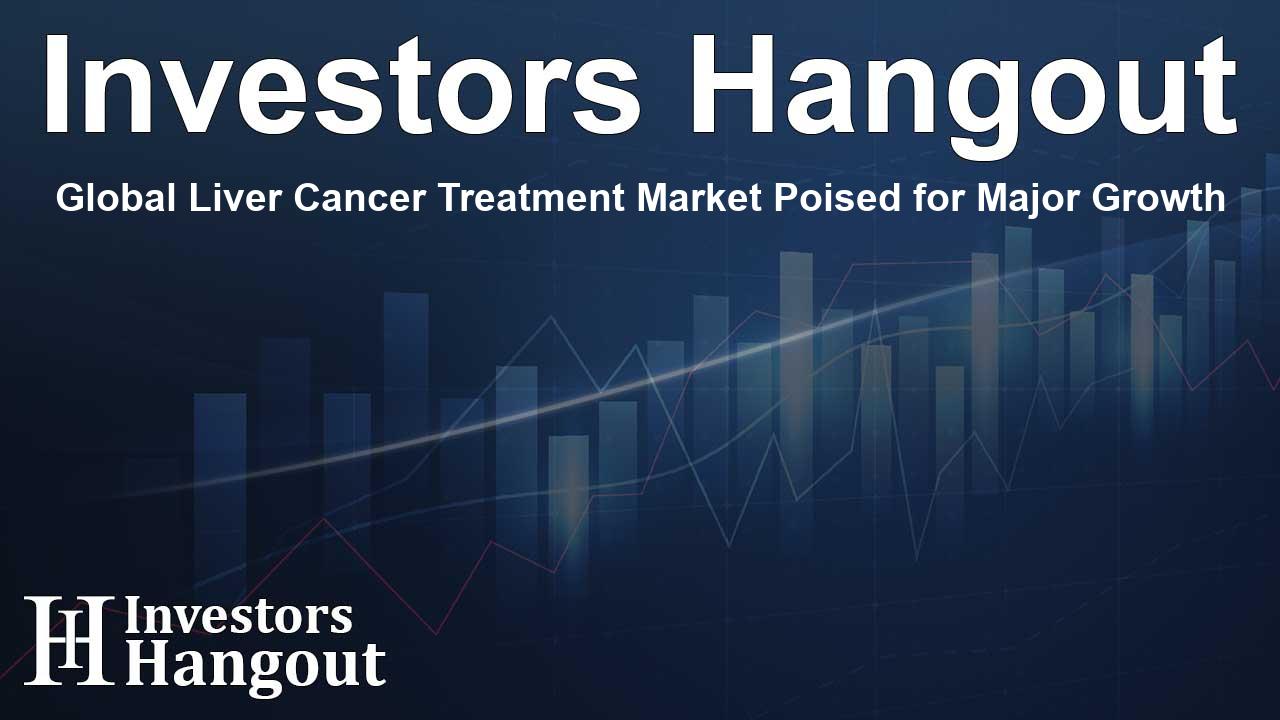Global Liver Cancer Treatment Market Poised for Major Growth

Growth Prospects of the Global Liver Cancer Treatment Market
As the world continues to grapple with the rising incidence of liver cancer, a substantial shift is occurring in the treatment landscape. The Liver Cancer Treatment Market is expected to reach a remarkable revenue of USD 8.88 billion. This anticipated growth is marked by a compound annual growth rate (CAGR) of 13.45% between 2024 and 2031. As healthcare systems worldwide prioritize cancer care, the implications for pharmaceutical and biotech companies are profound.
Drivers Fueling Market Expansion
Increasing Incidence of Liver Cancer
The primary driver behind this market expansion is the alarming rise in liver cancer cases globally, particularly hepatocellular carcinoma (HCC). The increase is largely attributed to chronic infections such as hepatitis B and C, along with lifestyle changes leading to non-alcoholic fatty liver disease (NAFLD). With liver cancer being a leading cause of cancer-related deaths, the urgency for effective treatments has become increasingly clear.
Innovative Therapeutic Approaches
Within this dynamic landscape, advancements in treatment methodologies are noteworthy. The introduction of targeted therapies and immunotherapies has significantly changed patient outcomes. Notable drugs, including sorafenib and lenvatinib, have shown promising results in improving survival rates for those with advanced liver cancer. Additionally, the combination of immunotherapy with traditional anti-cancer treatments is gaining traction, opening new avenues for enhancing effectiveness.
Awareness and Early Diagnostics
Enhancing Patient Education
Healthcare bodies are taking significant strides in enhancing awareness around liver cancer. Various campaigns aimed at early diagnosis are being implemented, with screening initiatives becoming more common. With advancements in imaging techniques like MRI and CT scans, patients are receiving better diagnostic services promptly. This focus on early detection is crucial, as catching liver cancer in its early stages greatly increases treatment efficacy.
Accessibility Challenges
Despite progress, challenges remain. The high costs associated with advanced liver cancer treatments present a significant barrier. Many patients face financial burdens, especially in regions where access to healthcare services is limited. Innovative therapies, though effective, often come with costly price tags that place a strain on healthcare systems and patients alike.
Market Restraints Impacting Growth
Financial Barriers
The substantial expense related to innovative liver cancer treatments hinders market growth. Premium therapies, especially biologics, require continuous treatments that can quickly become financially prohibitive. In regions with inadequate health insurance options, the situation becomes even more intensive, limiting treatment accessibility.
Regulatory Challenges
The path to market for new liver cancer therapies is often fraught with stringent regulatory hurdles. Regulatory bodies demand extensive clinical trial data, which can prolong the approval process and inhibit smaller companies from bringing new therapies to market. The rigorous oversight post-approval adds another layer of complexity to manufacturing and distribution, which can deter innovation.
Regional Insights and Market Dynamics
Leading Region: Asia-Pacific
The Asia-Pacific region is prominently positioned in the Liver Cancer Treatment Market. An increasing burden of liver diseases, particularly due to hepatitis infections, drives demand for effective therapies. With stronger investments in healthcare systems and increased access to advanced treatments, this region presents immense growth opportunities for pharmaceutical companies looking to meet unaddressed needs.
Key Players Redefining the Market
The competitive landscape is characterized by the presence of notable industry players, including Exelixis, Inc., Merck & Co., Inc., Bayer AG, Pfizer, Inc., Novartis AG, and Amgen. These companies are focusing on innovations, collaborating on research initiatives, and harnessing emerging technologies to create breakthrough treatments for liver cancer.
Frequently Asked Questions
What is the projected market size of the Liver Cancer Treatment Market?
The market is expected to grow to USD 8.88 billion by 2031.
What are the main drivers of market growth?
The rising incidence of liver cancer and the introduction of innovative therapeutic methods are key drivers.
Why is early diagnosis vital for liver cancer treatment?
Early detection significantly increases the chances of successful treatment and improves patient outcomes.
What challenges does the Liver Cancer Treatment Market face?
High treatment costs and regulatory hurdles are significant challenges affecting market growth.
Which regions present the most opportunity for growth?
The Asia-Pacific region, with its high incidence rates and improving healthcare infrastructure, offers substantial growth potential.
About The Author
Contact Lucas Young privately here. Or send an email with ATTN: Lucas Young as the subject to contact@investorshangout.com.
About Investors Hangout
Investors Hangout is a leading online stock forum for financial discussion and learning, offering a wide range of free tools and resources. It draws in traders of all levels, who exchange market knowledge, investigate trading tactics, and keep an eye on industry developments in real time. Featuring financial articles, stock message boards, quotes, charts, company profiles, and live news updates. Through cooperative learning and a wealth of informational resources, it helps users from novices creating their first portfolios to experts honing their techniques. Join Investors Hangout today: https://investorshangout.com/
The content of this article is based on factual, publicly available information and does not represent legal, financial, or investment advice. Investors Hangout does not offer financial advice, and the author is not a licensed financial advisor. Consult a qualified advisor before making any financial or investment decisions based on this article. This article should not be considered advice to purchase, sell, or hold any securities or other investments. If any of the material provided here is inaccurate, please contact us for corrections.
